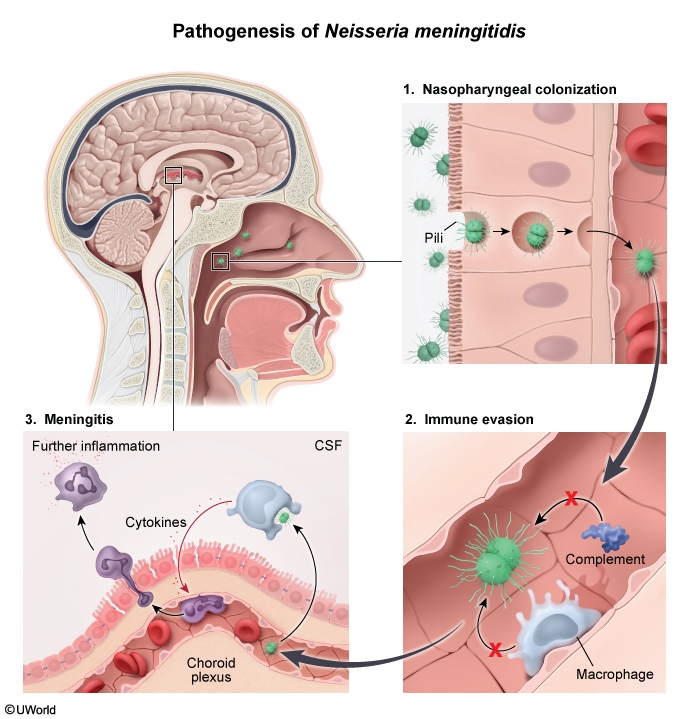Neisseria Meningitidis (Meningococcal Meningitis)
Article Sections
Introduction
Neisseria meningitidis is a gram-negative diplococcus that causes community-acquired, acute bacterial meningitis (inflammation of the protective membranes that surround the brain and spinal cord).
Pathophysiology
N meningitidis has several virulence factors (Figure 1):
- Pili that permit bacterial attachment to the respiratory mucosa and have significant antigenic variation
- IgA protease, which cleaves secretory IgA that would otherwise inactivate the pili
- Opacity proteins that aid in endothelial attachment and invasion
- Polysaccharide capsule that impairs phagocytosis of the bacteria
- Lipooligosaccharides, which induce cytokine production (leading to systemic inflammation)
Several serogroups are organized based on their polysaccharide capsule, but the majority of disease is caused by serogroups A, B, C, W, and Y.
N meningitidis is transmitted through aerosolized respiratory droplets that take the bacteria to the nasopharyngeal epithelium, where it attaches. From there, it can invade the bloodstream (eg, bacteremia) and evade the immune system, potentially allowing for infection of the cerebrospinal fluid (CSF) via the cerebral capillary epithelium or the choroid plexus.
Continue Learning with UWorld
Get the full Neisseria Meningitidis (Meningococcal Meningitis) article plus rich visuals, real-world cases, and in-depth insights from medical experts, all available through the UWorld Medical Library.
Figures
